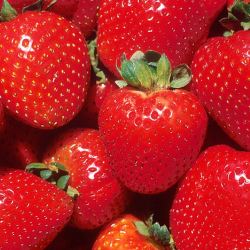Spring is in the air which means that flowers are blooming and the Environmental Working Group (EWG) has published their annual "Dirty Dozen."
The concept of the list is to help consumers decide, as they are choosing their produce, which types of fruits and vegetables should be given priority when buying the organic version.
But, the list should be ignored for a multitude of reasons. First of all, it promotes the idea that organic foods do not have pesticides (which they do). To take a closer look and find out exactly what they are, please refer to the National List of pesticides approved for organically certified farms.
EWG publishes the methods for how their list is created, which is appreciated. They can be found here.
Given the methods, the list makes some claims that are not backed up by scientific evidence. This was made clear through the publication of a peer-reviewed paper in 2011, in the Journal of Toxicology. (1) The research group tested whether the dirty dozen was, indeed, dirty. This is a peer-reviewed scientific paper - not a blog on a website.
Because the overarching idea behind the list is that the amount of pesticides found in the dirty dozen should be avoided because they are harmful to health, the research compared the amount of pesticides on samples of the foods listed in the Dirty Dozen to the chronic reference dose, which is the maximum amount that you can have if you are eating that food every day of your life. The level of the chronic reference dose is much higher than anything that would ever lead to a health effect (100 times higher than the amount that caused effects in animals.) However, none of the foods tested reached that level. In addition, not all pesticides are the same when it comes to human health.
EWG also claim that “consumers can lower their pesticide consumption by nearly four-fifths by avoiding conventionally grown varieties of the 12 most contaminated fruits and vegetables.” However, since they do not measure consumer exposure, there is no way to make this statement.
The research concluded that
In summary, findings conclusively demonstrate that consumer exposures to the ten most frequently detected pesticides on EWG's “Dirty Dozen” commodity list are at negligible levels and that the EWG methodology is insufficient to allow any meaningful rankings among commodities. We concur with EWG President Kenneth Cook who maintains that “We recommend that people eat healthy by eating more fruits and vegetables, whether conventional or organic”, but our findings do not indicate that substituting organic forms of the “Dirty Dozen” commodities for conventional forms will lead to any measurable consumer health benefit.
So, the dirty dozen is a list of twelve fruits and vegetables (we are not even going to post it the list because that would lend some credibility to it) that probably have some pesticides on them - and nothing more. So, please, mainstream media (CBS, CNN, and USA Today - we're looking at you) please stop promoting the useless information that inherently comes along with this list.
Source: Carl Winter and Josh Katz. Dietary Exposure to Pesticide Residues from Commodities Alleged to Contain the Highest Contamination Levels. Journal of Toxicology Published online 2011 May 15. doi: 10.1155/2011/589674

